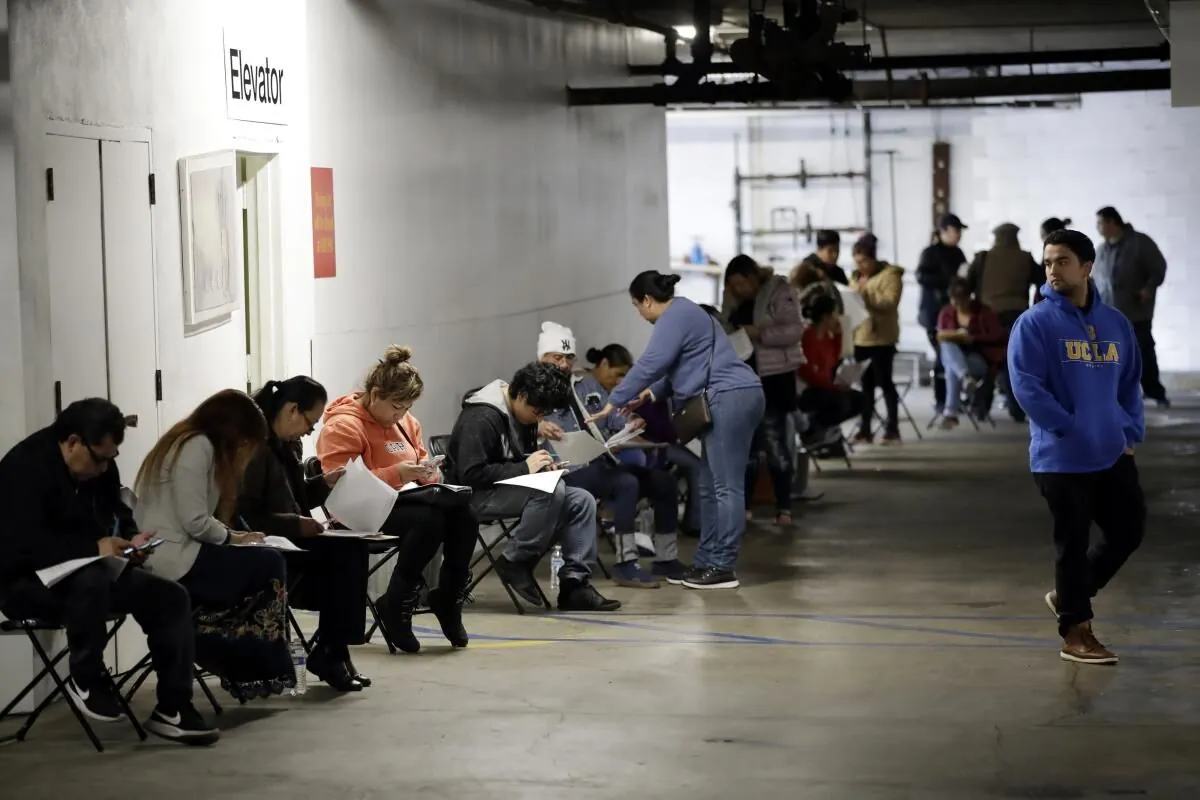U.S. Jobless Claims Hit 4-Month Low as Fed Shifts Economic Strategy
U.S. unemployment benefit applications dropped to a 4-month low, signaling a resilient job market. The Federal Reserve's recent rate cut aims to balance inflation control with employment support.

The U.S. labor market has shown resilience as applications for unemployment benefits reached their lowest point in four months, according to recent data from the U.S. Department of Labor. This development comes as the Federal Reserve adjusts its economic strategy to maintain a delicate balance between controlling inflation and supporting employment.
For the week ending September 21, 2024, jobless claims decreased by 4,000 to 218,000, marking the lowest level since mid-May. This figure surpassed analysts' expectations of 224,000 and represents a continuation of a two-week downward trend. The four-week average, which smooths out weekly fluctuations, also declined to 224,750.
These numbers are particularly significant given the historical context of U.S. unemployment. The current system of unemployment insurance was established in 1935 as part of the Social Security Act, a response to the economic challenges of the Great Depression. During that era, the U.S. experienced its highest unemployment rate of 24.9% in 1933, a stark contrast to today's figures.
The recent decline in jobless claims follows a period of modest increases that began in late spring 2024. This shift had initially raised concerns about the impact of high interest rates on the job market. However, the latest data suggests that the labor market remains relatively robust.
In response to these economic indicators, the Federal Reserve recently implemented its first interest rate cut in four years. This decision marks a significant shift in the central bank's focus from inflation control to employment support. The Federal Reserve, established in 1913 to provide a more stable financial system, operates under dual mandates of maximum employment and price stability.
"Inflation has retreated steadily, approaching our 2% target, and we can now declare it largely under control."
The Fed's goal is to achieve a "soft landing," a delicate economic maneuver aimed at curbing inflation without triggering a recession. This objective is particularly challenging given that the U.S. has experienced 34 recessions since 1854.
While the job market appears stable, there are signs of cooling. U.S. employers added 142,000 jobs in August 2024, an improvement from July's 89,000 but below the January-June monthly average of nearly 218,000. Additionally, recent revisions by the Labor Department indicated 818,000 fewer jobs were created from April 2023 through March 2024 than initially reported.
These adjustments highlight the complexities of measuring employment in an evolving economy. The U.S. uses six different measures of unemployment, with U3 being the official rate. The emergence of the gig economy has further complicated how employment is measured and understood in recent years.
As of the week ending September 14, 2024, approximately 1.83 million Americans were collecting jobless benefits, a slight increase from the previous week. This figure, while noteworthy, is still far from historical highs and must be considered in the context of the U.S. labor force participation rate, which peaked at 67.3% in early 2000.

The current economic landscape presents a unique set of challenges and opportunities. The concept of "full employment" doesn't imply zero unemployment but rather a low and stable rate. Similarly, the idea of a "jobless recovery," which emerged in the 1990s, describes economic growth without corresponding job growth – a phenomenon that policymakers must navigate carefully.
As the U.S. economy continues to evolve, the interplay between unemployment rates, inflation, and economic growth remains a critical area of focus for policymakers and economists alike. The coming months will be crucial in determining whether the Federal Reserve's strategy can successfully maintain the delicate balance required for sustained economic health.


































